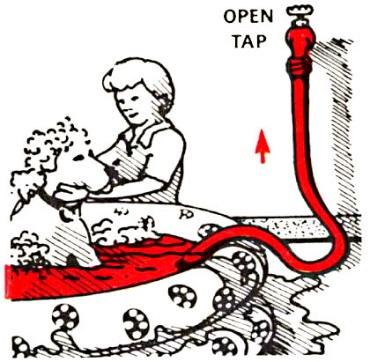Certified Plumbing Companies Providing Backflow Related Services
The average cost is between $100-$180 ( this is an average some companies may charge more )
Disclaimer: This consolidated list of plumbing companies was compiled by AACO Backflow Program as a convenience for our customers. AACO Backflow Program has verified that the plumbing companies on this list are licensed and certified in accordance with Maryland regulations to perform cross connection/backflow prevention related plumbing services. Inclusion on this list is entirely voluntary and consists of plumbing companies that utilize our online system for entering testing results. This list does not represent all companies registered with the AACO Backflow Program. The companies listed do not work for nor are they associated in any way with AACO Backflow Program and AACO Backflow Program assumes no liability for any work performed by a listed company.
The Anne Arundel County Department of Public Works protects the integrity of public drinking water sources by requiring all homes, businesses, and facilities to install backflow prevention devices. Backflow prevention devices inhibit the contamination of potable water with non-potable water, solids, or gasses by preventing water from flowing backwards into supply lines at points where cross connections occur in piping fixtures.

The Importance of Backflow Prevention
An unprotected point of water use could contaminate the drinking water not only to your business or home, but also the water system connected to neighboring homes and businesses. Severe injuries and even death have resulted from cross contamination events that could have been prevented through backflow protection. Such events have been known to cause outbreaks of Hepatitis A, Gastroenteritis, poisoning, and chemical burns in showers.
Unfortunately, occurrences of backflow happen despite the efforts of local water suppliers. Backflow can occur when there are occurrences of reduced, or increased pressure in distribution systems. There are numerous cases of backflow incidents documented across the country. Some examples include:
- An exterminating contractor submerged a garden hose into a drum of highly toxic chlordane. The chlordane siphoned back through the tap and into the public water supply main. City water mains had to be flushed extensively.
- A faulty system and human error caused drinking water and antifreeze to mix at a school. Three hundred students were evacuated after the water fountains were contaminated with antifreeze.
How Can Contamination Occur
Non-potable water or chemicals can end up in the drinking water lines as a result of backpressure or backsiphonage. Backpressure occurs when the pressure in a water system is greater than the supply line of potable water. Backsiphonage occurs when the pressure of potable water supply lines drops (due to a broken main or heavy water demand) and contaminants are sucked back into potable water supplies.
County and International Plumbing Code
The International Plumbing Code (IPC) adopted by the County requires protection of all potable water supplies. IPC code mandates the protection of the County water supply and is the law requiring backflow prevention assemblies to ensure protection of the County’s potable water system. The rules and regulations are summarized as follows:
- Install an approved backflow preventer on all point of use water lines where it is deemed necessary. Including residential Fire Suppression Systems and Lawn Irrigation Systems.
- Have the backflow assembly tested after installation, then annually, and/or immediately following repairs.
- A State-certified backflow tester must perform the test and return copies of the test report to Anne Arundel county DPW within 30 days of a passing test. Failed tests should be sent within 72 hours.
- A County licensed and certified plumber should perform all repairs.
The Responsibility to Home and Business Owners
All homeowners, business, and facilities are required to install a backflow prevention assembly on point of use water supply lines where deemed necessary. Classification of hazard (low or high) will be determined to establish the type of backflow prevention assembly to be installed. All installation procedures and assemblies will have to meet definitions of certification and be approved. All testing of assemblies will also need to be performed by certified and County approved testers with an initial test after installation then annually or more frequently if deemed necessary (with relation to hazard) by Anne Arundel County. Proper maintenance and replacement of faulty assemblies will also be the responsibility of the business/homeowner.
When purchasing a new home assembly of the backflow preventer is most often completed during the construction phase and testing is typically done at the same time. Every year, from the time the system is assembled on, the backflow preventer(s) must be tested by a certified and approved tester.
If your home has a lawn irrigation system the backflow preventer is typically located on the outside of the home. If your home has a fire suppression system the backflow preventer is typically located in the basement or utility room.
The Cost of Backflow Prevention
The typical cost of a needed backflow assembly will vary in price depending on the type and manufacturer of the devices installed. Because a backflow preventer may be the only barrier you have between possible contamination and the public water supply, your investment in installation and maintenance are minimal compared to the potential liability of a backflow incident.
Resources
If you have questions regarding the Anne Arundel County Backflow Prevention & Cross Connection Program please contact The Backflow Prevention Team
